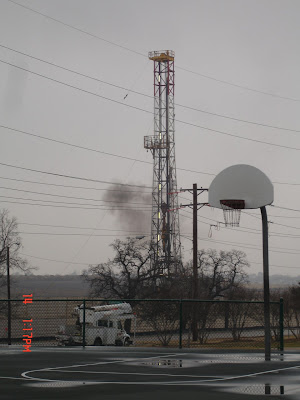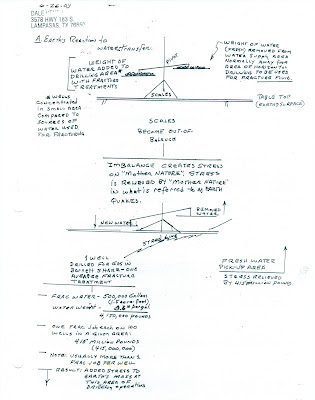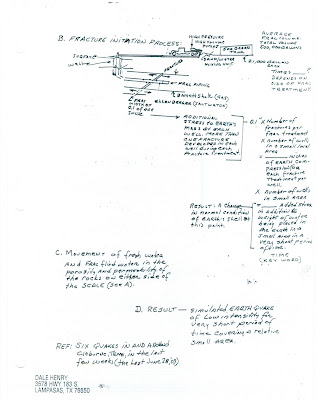Scientist blames quakes on drilling
Arkansas Online
A series of temblors near Greenbrier in central Arkansas, including one Thursday evening, were more likely caused by gas and oil drilling than an active fault, geologists said
That link requires a subscription and I haven’t yet found a link for the article that doesn’t require one but I received the entire article in an email.
Arkansas has had several quakes over the past several months. Haydar Al-Shukri, director of the Arkansas Earthquake Center at the University of Arkansas at Little Rock believes they are caused by drilling in the area because the quakes are infrequent. He says earthquakes caused by a fault would cause more “constant activity.”
He said drilling and injecting the holes with fluid create pressure underground and cause shifting of tectonic plates.
Dale Henry, Petroleum Engineer for over 50 years, said the same thing and drew these diagrams to show how it works. click for a larger view
Al-Shukri said:
The epicenters of the quakes were at different depths – another indication that they are not fault-based and instead are caused by the drilling, Al-Shukri said.
“When someone extracts oil or injects a lot of fluid into the subsurface, it causes a tip in the balance,” he said. “These quakes are the result of that imbalance.”
That’s is consistent with Henry’s diagrams.
He also said that he didn’t expect any problems from the quakes because “…most are happening in the middle of nowhere where the drilling is going on.”
…unlike the drilling in North Texas that is happening right in the middle of neighborhoods.
 Range Resources drilling one of 5 wells at a site in Denton, TX only a few hundred feet from a neighborhood, park, hospital, retirement home, doctor’s offices, etc.
Range Resources drilling one of 5 wells at a site in Denton, TX only a few hundred feet from a neighborhood, park, hospital, retirement home, doctor’s offices, etc.
About Sharon Wilson
Sharon Wilson is considered a leading citizen expert on the impacts of shale oil and gas extraction. She is the go-to person whether it’s top EPA officials from D.C., national and international news networks, or residents facing the shock of eminent domain and the devastating environmental effects of natural gas development in their backyards.
- Web |
- More Posts(5121)


Well, there you have it. What we have known and clear reasons for what we have observed…. Thanks.
They also pump an average of 3 to 4 millions pounds of sand into each well. Add that to water weight and it is astounding!
Soething not mentioned is that if you have shales and slates under stress and pump water into the formation under pressure, the water can act as a lubricant that will allow stratigraphic layers to slide more easily.
That is very interesting. I have the smartest readers!